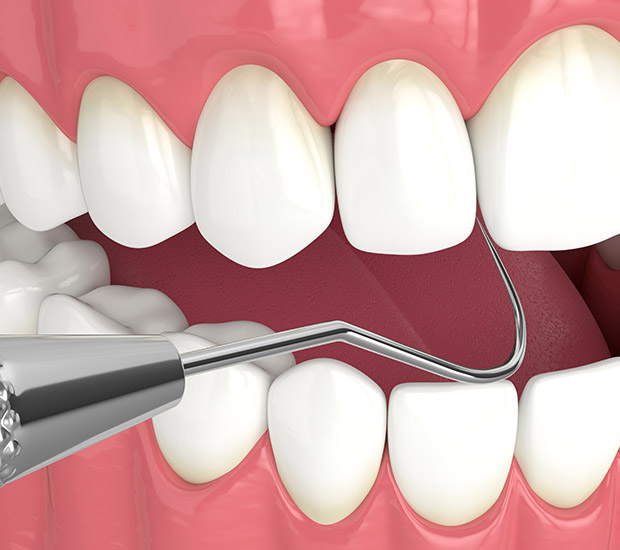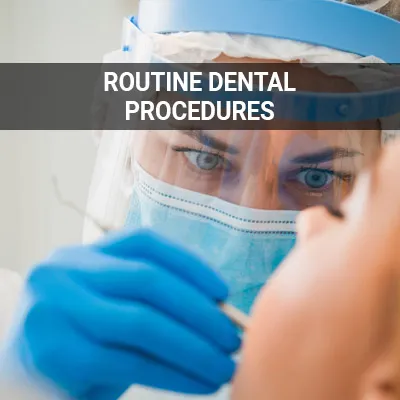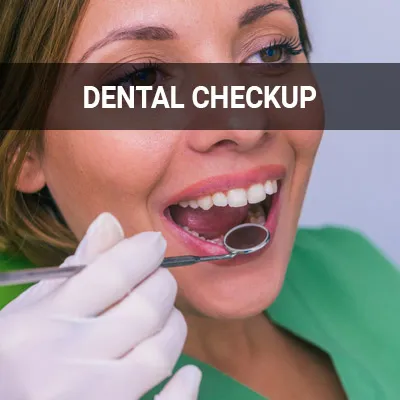Interactive Periodontal Probing Livermore, CA
Interactive periodontal probing is a method used to measure pocket depths around a tooth and establish a patient's state of health. It is also referred to as periodontal testing. Complete health dentists conduct these tests to determine tooth or gum issues as well as underlying health conditions that present themselves through gum health.
Periodontal probing is considered interactive as the dentist and patient both gain an in-depth understanding of each tooth's state and the mouth's overall condition. These insights help the dentist create a complete treatment plan that targets both the patient's oral and systemic health. The test can also diagnose a patient with periodontal disease in its early stages.
Interactive periodontal probing is available at Livermore Dental Spa in Livermore and the surrounding area. Our staff can help you learn more about the test and answer any questions you have. Call us at (925) 344-3993 to schedule a consultation appointment today.
Performing Periodontal Probing
Dentists insert a periodontal probe (a thin measuring instrument) into the space between the gum tissue and each of the teeth (called the pocket). The tool measures the depth of that pocket. A healthy pocket depth is between 1 to 3 mm of depth.
If the dentist discovers pocket depths above 4 mm during periodontal probing or if the gums bleed during the procedure. In this case, these signs could tell the dentist that a person has gum disease or periodontal disease. If pockets are deeper than 5 mm, it will be harder to keep teeth and gums clean. At this point, the dentists may recommend additional interventions.
“If pockets are deeper than 5 mm, it will be harder to keep teeth and gums clean.”
Periodontal Charting
Periodontal charting is a part of a patient's dental or gum chart that indicates the state of the teeth and mouth's health. A periodontal chart includes six measurements (in millimeters) that are taken around each tooth. The main reason for periodontal charting is checking for periodontal disease, but it is also beneficial to check for many other oral and systemic health concerns.
What It Reveals
The chart is a pictorial representation of the mouth and includes graphics and information pertaining to the tests conducted during the first appointment. Healthline provides the conditions and issues that a periodontal test and chart reveal:
- areas of decay (cavities)
- missing teeth
- depths of your gum pockets, bleeding points during probing, and gum recession
- abnormalities in your teeth, such as rotations, erosion, or abrasions in your teeth or enamel
- damage to your teeth
- presence of crowns, bridges, implants, and fillings
- attachment of your teeth to the gums
- any movement in your teeth
- any bleeding in your gums
“A periodontal chart includes six measurements (in millimeters) that are taken around each tooth.”
Risk Assessment Made by Dentist
With interactive periodontal probing and periodontal charting, a dentist can determine a person's risk for periodontal disease and other oral health concerns. From periodontal charting, a dentist can determine a person's risk for progressing periodontal disease by weighing six different factors:
- How many of the patient’s gums bled during probing
- Number of pockets deeper than 4 mm
- Number of lost teeth
- Patient age
- Underlying health or genetic conditions, including pregnancy or cardiovascular disease
- Smoking or other potential lifestyle risks
Based on these six risk assessment factors, dentists can decide if a patient has a low, moderate, or high risk for periodontal disease.
“From periodontal charting, the dentist can determine a patient’s risk for progressing periodontal disease by weighing six different factors.”
Check out what others are saying about our dental services on Yelp: Interactive Periodontal Probing in Livermore, CA
Who Should Receive Periodontal Testing
Although some people may be more at risk than others in terms of acquiring periodontal disease, the American Academy of Periodontology recommends all adults receive annual screenings. A Comprehensive Periodontal Evaluation, or CPE, assesses the patient's periodontal health by examining their teeth, amount of plaque, gums, bite, bone structure, and risk factors. Periodontal testing and the CPE are often done during the initial appointment.
Patients who are at high risk of developing periodontal disease may be asked to undergo testing more than once a year. Factors that contribute to high-risk include:
- Gingivitis
- Poor oral health habits
- Smoking or chewing tobacco
- Hormonal changes, such as those related to pregnancy or menopause
- Recreational drug use, such as smoking marijuana or vaping
- Obesity
- Inadequate nutrition, including vitamin C deficiency
- Genetics
- Certain medications that cause dry mouth or gum changes
- Conditions that cause decreased immunity, such as leukemia, HIV/AIDS and cancer treatment
- Certain diseases, such as diabetes, rheumatoid arthritis and Crohn’s disease
“Although some people may be more at risk than others in terms of acquiring periodontal disease, the American Academy of Periodontology recommends all adults be screened annually.”
Questions Answered on This Page
Q. What does periodontal probing reveal?
Q. How is the periodontal probing performed?
Q. What does a risk assessment made by a dentist show?
People Also Ask
Q. Why is preventative care important? How can it save you money?
Q. What should a home oral care routine include?
Q. What are common signs of gum disease?
Frequently Asked Questions About Interactive Periodontal Probing
Q. When should I receive periodontal probing?
A. The answer depends on the patient. Current guidelines suggest healthy adults receive annual periodontal probing to reduce the risk of gum disease. Patients whose dentists identified higher risk assessment factors may need more frequent periodontal probing to prevent oral health complications.
Q. Will periodontal probing hurt?
A. If you already have periodontal disease, you may experience slight discomfort during periodontal probing. However, little pain is reported during the procedure. If you are concerned about the procedure, you may talk to your dentist about topical numbing creams.
Q. Does periodontal probing make gums bleed?
A. This procedure is designed to check the health of your gums and assess risk factors, including bleeding gums. If your gums bleed during periodontal probing, it is likely a sign that their health is compromised. Bleeding gums are rarely due to probing alone.
Q. What do I do if I have a high risk for periodontal disease?
A. If periodontal probing reveals that you have pockets over 4 mm, you may need frequent in-office cleanings. At this stage, at-home oral hygiene will be difficult. Your dentist can offer specific recommendations but will likely recommend visits every three to six months to prevent disease progression or tooth decay.
Q. What impact can periodontal disease have on my overall health?
A. It is important to work to prevent and treat periodontal disease. Studies have shown gum disease may increase one's risk of other health problems such as high blood pressure, diabetes, and stroke. Some studies even link periodontal disease to cancer, dementia, arthritis, and kidney disease.
Dental Terminology
Call Us Today
If you are looking for more information pertaining to periodontal probing or testing, call us today at 925-344-3993 to learn more or make an appointment.
Helpful Related Links
- American Dental Association (ADA). Glossary of Dental Clinical Terms. 2024
About our business, license, and website security
- Livermore Dental Spa was established in 2023.
- We accept the following payment methods: American Express, Cash, Discover, MasterCard, and Visa
- We serve patients from the following counties: Alameda County, Contra Costa County and San Joaquin County
- We serve patients from the following cities: Livermore, Alameda, Pleasanton, Dublin, Ulmar, Tracy, San Ramon, Danville, Mountain House and Castro Valley
- CA (License #101519). View License Information and Specifics
- National Provider Identifier Database (1679095681). View NPI Registry Information
- Healthgrades. View Background Information and Reviews
- Norton Safe Web. View Details
- Trend Micro Site Safety Center. View Details
Back to top of Interactive Periodontal Probing










